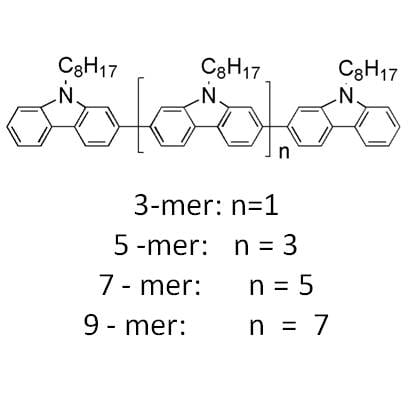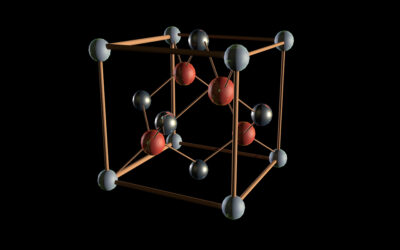 Carbazole-based conjugated polymers and oligomers have received considerable interest due to their numerous applications as photorefractive materials, hole-transporting materials, donor materials for polymer solar cells and more. Due to the electron-rich nature of the carbazole ring, iododesilylation chemistry used in the synthesis of structurally similar oligomers, like oligo(2,7-fluorene)s, cannot be applied to the preparation of monodisperse oligo(2,7-carbazole)s. Therefore, despite the advances in poly(2,7-carbazole) synthesis, the preparation of monodisperse oligo(2,7-carbazole)s remained challenging.
Carbazole-based conjugated polymers and oligomers have received considerable interest due to their numerous applications as photorefractive materials, hole-transporting materials, donor materials for polymer solar cells and more. Due to the electron-rich nature of the carbazole ring, iododesilylation chemistry used in the synthesis of structurally similar oligomers, like oligo(2,7-fluorene)s, cannot be applied to the preparation of monodisperse oligo(2,7-carbazole)s. Therefore, despite the advances in poly(2,7-carbazole) synthesis, the preparation of monodisperse oligo(2,7-carbazole)s remained challenging.
Ruiping Qin (Henan Normal University, Xinxiang) and Zhishan Bo (Beijing Normal University) have now succeeded for the first time in synthesizing a set of monodisperse 2,7-linked carbazole oligomers up to 9-mer by modular chemistry. Their chain-length dependent optical properties, as well as their electrochemical and thermal properties were investigated. The synthesized oligomers absorb in the ultraviolet region and emit in the blue region with almost quantitative fluorescence quantum yield in solution. With the increase of the conjugation length, the absorption and emission maxima become red-shifted. In film, the shorter oligomers, 3-mer and 5-mer, exhibit featureless emission spectra, whereas the longer oligomers, 7-mer and 9-mer show well-resolved emission spectra. Electrochemical investigations demonstrated that the onset oxidation potentials of these oligomers slightly hoist when the conjugation length increases.
This paper provides an important source of information for researchers studying the design and synthesis of carbazole-based polymers for optoelectronic applications.

















